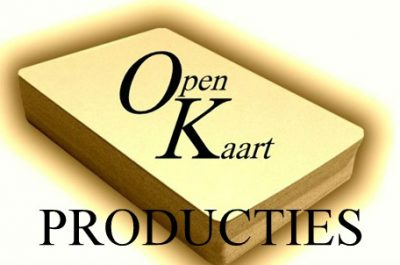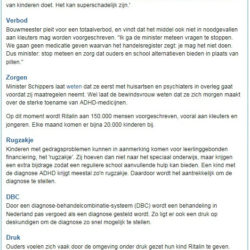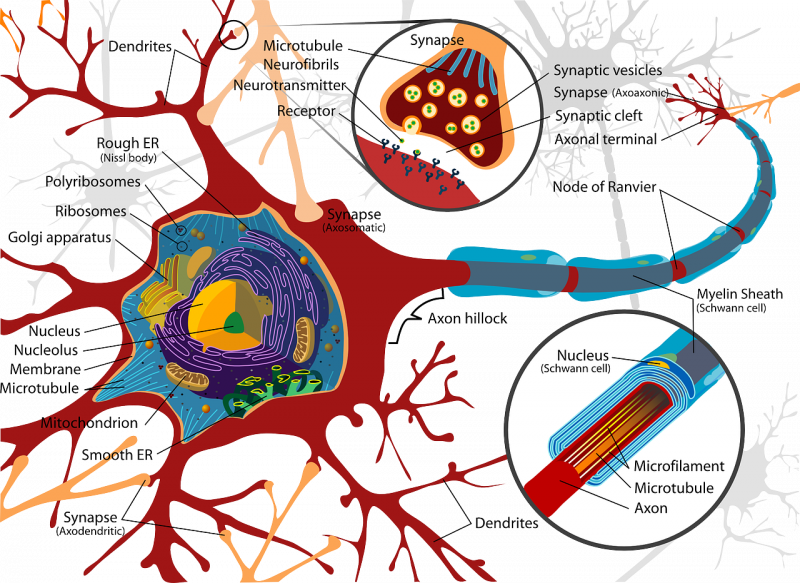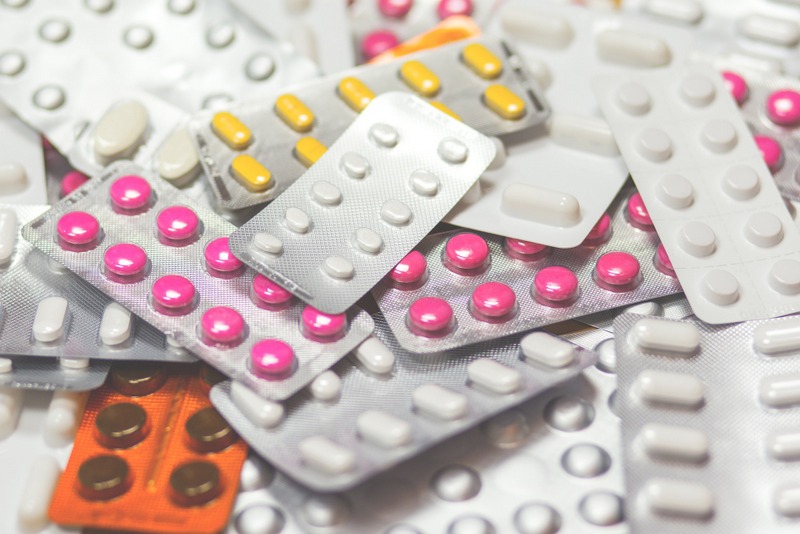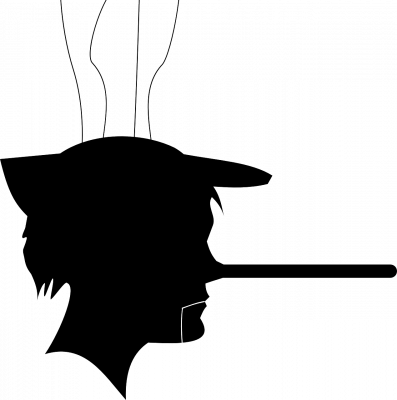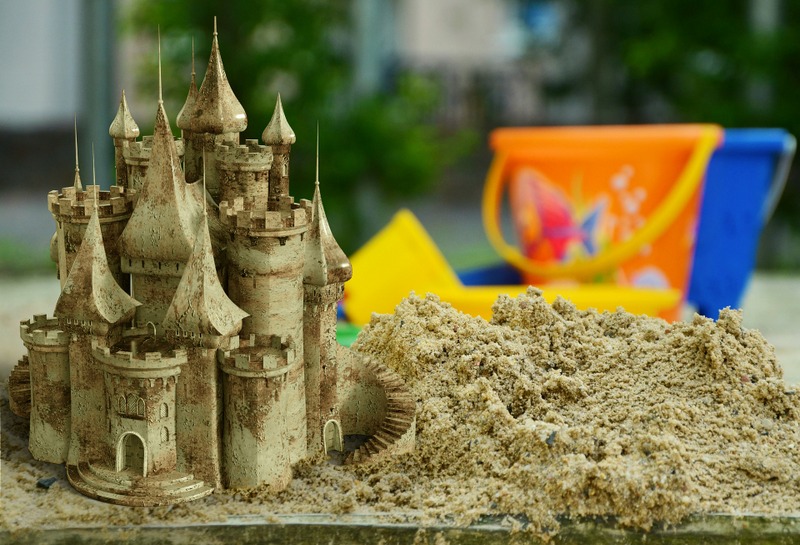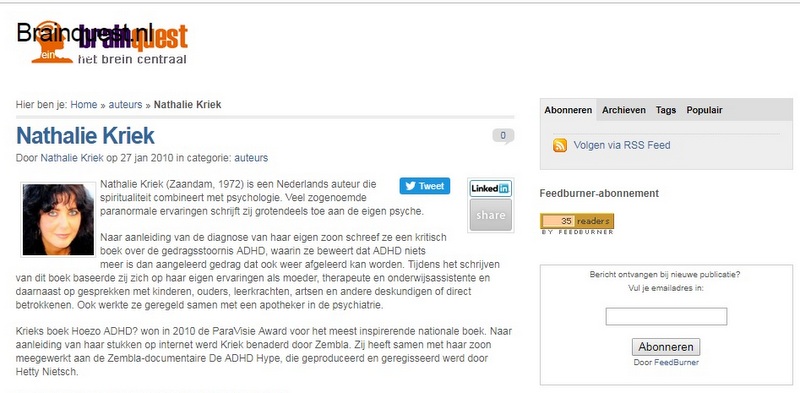ADHD vs HSP and what you didn't know about Ritalin and Strattera
What you didn't already know about ADHD, HSP, Ritalin and Strattera, but should know. Because ADHD versus HSP/high sensitivity: isn't that a bit like comparing apples and oranges? No. ADHD and HSP have more in common than you think. And so do Ritalin and Strattera!
I previously wrote the article below for Brainquest in response to my book 'Hoezo ADHD?', which won the award for most inspiring book in the national category in 2010. As a result, I was asked to collaborate before -and behind the scenes on the Zembla documentary 'The ADHD Hype' and the episode 'Toddlers on Ritalin' of Nieuwsuur.
ADHD vs HSP
- An HSP (High Sensitive Person) is someone who is hypersensitive to stimuli (high sensitivity), which can get in the way of daily functioning quite a bit. However, the existence of HSP cannot be proven through blood tests, scans, photos or other medical examinations. High sensitivity or high sensitivity is determined on the basis of a questionnaire.
- ADHD (Attention Deficit Attention Disorder) is regarded as a "congenital brain abnormality involving a biochemical imbalance between neurotransmitters" that causes a person to react hypersensitively to stimuli and be easily distracted as a result. However, no scientist has so far been able to demonstrate such an imbalance. One does not even have a clue what a normal balance should look like at all! ADHD is nothing more than a collection of behavioural symptoms and is diagnosed using a questionnaire.
ADHD and HSP not scientifically proven
So both ADHD and HSP cannot be scientifically proven. Yet so-called ADHD patients are provided with medication that acts on the brain precisely where no one has ever been able to prove that something is actually wrong here.
HSP is still unrecognised by the vast majority of the Dutch population and dismissed as hovering, while meanwhile 2 to 7 % of all children did get labelled ADHD.
And this is despite the fact that the basic issue is the same: external stimuli are not sufficiently filtered by the brain, so they come in many times louder than in people who do have this filter.
In ADHD, this is presumably due to an imbalance between neurotransmitters and/or dopamine deficiency; in HSP, it is due to a possibly dominant right hemisphere of the brain.
Apart from the above, the child's environment also plays a big role in excessive pressure and unconcentrated behaviour, but more on this later.
So both diagnoses are questionable to say the least. However, where the diagnosis of HSP is still collectively shunned, that of ADHD is made on the basis of the suspicion That there is a disturbed biochemical imbalance. And based on this suspicion thousands of children and adults are now taking Ritalin, Concerta, Medikinet or Equasym; drugs with Methylphenidate as the active ingredient.
A medicine covered by the Dutch Opium Act and listed here on list 1 under the hard drugs. A drug that - despite the fact that many people still deny it - has the same characteristics as cocaine.
A drug that officially is not approved for adults and whose effects on children are unclear in the long term.
Yet there are apparently still thousands of people willing to take the gamble. If ADHD medication works, you have ADHD. If not, something else is wrong, the claim goes.
What you didn't know about Ritalin
If Ritalin works you have ADHD, that's what it boils down to in a nutshell. And, as far as I'm concerned, immediately the big No 1 among ADHD lies. But if this is a lie, how is it possible that in some ADHD patients ADHD medication works and in others it does not?
It's just what you want to believe. Would you like to believe that ADHD as a disorder really exists, then of course this is the perfect explanation: in ADHD patients, stimulant medications work - psycho stimulants - different from non-ADHD patients.
Whereas ADHD-ers get calm from stimulants, non-ADHD-ers actually get hyper after taking such medication. But alas: untrue!
Dull
Often, determining the right dose of medication for someone is still a puzzle. Many children who experiment with ADHD medication following advice (usually from school) and doctor's orders will, in most cases, not respond well to the drug at all at first.
They either become even more hyperactive or so drowsy that they no longer feel like doing anything (so-called zombie behaviour). Then, under the doctor's supervision, the dose is adjusted and often adjusted again and again - or experimented with another medicine - until finally the right dose is established and the child actually seems calmer and can concentrate better at school.
For many people, the fact that the child responded well to the drug is apparently still THE proof that there really was a biochemical imbalance in the brain, because if there had been no ADHD, the child would not have responded well to the drug either. Right?
Experiment
No. One has absolutely nothing to do with the other. After all, what happens when non-ADHD people take amphetamines? What is the result then?
Don't they also become extra alert and more focused? Isn't that precisely why some top athletes, scientists and students use such drugs? To perform faster and more accurately? To stay more focused and keep going longer without getting distracted or tired?
Of course, everyone needs a different dose to achieve the desired effect. Every brain is different and therefore reacts differently.
Take weed or hash, for example. Some people get a huge laugh-kick from it, others fall asleep immediately or get sick, and still others don't notice the effects of these drugs at all. It is the same with Methylphenidate. Some react 'right away' while others have to puzzle or experiment for a while before the 'right dose' can be determined.
Cardiac arrest and cerebral infarction
To then say, when the right dose is finally found, "See, it works, so you have ADHD!" is farmer's deception of the highest order. There would be a right dose for everyone. If you adjust and measure long enough you will eventually find a dose that you respond well to, but this has absolutely nothing to do with any so-called disorder!
Thereby, Methylphenidate does not make the child calm. On the contrary! In ADHD, on the contrary, it is often the overdose of ADHD medication that provides the - apparent - calming effect. Although the child appears calm, in reality he or she is mainly over-concentrated as the drug stimulates the central nervous system, increasing focus.
Besides focus, heart rate also increases, breathing speeds up and body temperature rises. So the drug is anything but soothing!
This is also immediately the reason why Ritalin (Methylphenidate) increases the risk of cardiac arrhythmias or even increased cardiac arrest (as also in the leaflet is listed). Methylphenidate, in fact - like cocaine - tends to increase heart rate and constrict blood vessels. An extremely awkward combination.
Precisely when the heart beats faster, it needs more blood. Instead, the blood supply is stagnated by constricting blood vessels, which can cause severe palpitations. The blood also becomes viscous, which can cause it to clot.
This increases the risk of cerebral infarction. Especially in children who play intensive sports or otherwise exert great physical effort, this is very dangerous!
Parents who are aware of this usually do not choose Ritalin for this reason, but the drug Strattera whose chemical composition is Atomoxetine Hydrochloride. Strattera does not contain Methylphenidate and is therefore officially not a stimulant.
This medicine does not fall under the Dutch Opium Act, but it does fall under antidepressants. Strattera is a SNRI with a similar effect to the well-known SSRI. Very unsuitable for children under 18.
Yet Strattera is also very regularly used as ADHD medication. Why?
What you didn't know about Strattera
When an antidepressant (Prozac, Strattera, etc.) is prescribed for ADHD, the dose is four times higher than when used for depression. Parents who consciously do not want to give their child stimulants like Methylphenidate will be very disappointed.
In fact, the increased dose of this non-stimulant does have the same effect as wél-stimulants. Strattera was in fact a popular 'legal' doping for elite athletes in the past, only then it was called Prozac (See also book by ex top executive in pharmaceutical industry John Virapen).
So Strattera is just Prozac with another label on it. Prozac! The drug associated with most (attempted) murder and suicide.
On 31 August 2005, following the opinion of the European Commission for Medicinal Products for Human Use (CMHP), the European Commission issued the strictest warning ever on the use of antidepressants (SSRIs) by children under 18.
Indeed, clinical trials have shown that this medication triggered suicidal tendencies, suicide attempts and suicidal thoughts and/or related behaviours such as self-harm, hostility (aggression, defiance and anger) and mood instability in children and adolescents.
Due to these dangerous side effects, the organisation argues that these means should not be prescribed to children under 18 years of age.
The drugs in question are: Seroxat, Effexor, Prozac, Luvox, Celexa, Lexapro, Zoloft, Remeron, Milnacipran, Roboxetineen and Strattera. The European Commission is requiring that licences to market these drugs include that the drugs should not be prescribed to children under 18 because of the risk of suicide and aggression.
A similar warning should be included in the package leaflets. In the case of the drug Strattera not warned against suicide but aggression. Nasty!
Source: Radar
HSP
So it is fair to say that the cure - both Methylphenidate and Atomoxetine - is many times worse than the malady. An ailment that nota bene cannot be scientifically proven. An ailment that consists merely of a list of behavioural traits. Behavioural traits that could well have very different causes than a alleged biochemical imbalance of non-measurable 'substances' such as dopamine, noradrenaline and serotonin ...
The term 'high sensitivity', however, makes many a down-to-earth person's toes curl in annoyance. Unjustified, because high sensitivity has absolutely nothing to do with floating in any form. My theory of high sensitivity is mainly based on my own observations with a view to the behaviour of children in general and not based on what many new age children (or indigo children).
Highly sensitive... I don't believe this is so much to do with the 'new age'. There have always been sensitive children. Twenty, 30, 40 years ago and before that too. It is true, however, that the new era brings with it a lot more stimuli in the form of more obligations out-and-back. For example, in the form of
- a full agenda every day because of obligations such as hobby clubs, sports training and music lessons
- daily stay in between- and after-school care in busy, stimulating nurseries
- the constant availability and presence of non-stop screaming TV programmes
- 24/7 internet triggers
- constantly ringing, vibrating and flashing mobile phones (yes, including mum or dad's!) and all the other digital and mobile jammers that create constant distractions.
Even non-highly sensitive children can become very stressed by this.
High sensitivity mainly has to do with the way information is processed in combination with environmental influences. In my opinion, environmental influences in particular are the biggest cause of ADHD behaviour in children.
However, not every highly sensitive child exhibits ADHD behaviour and not every child who exhibits ADHD behaviour is highly sensitive. More on that later.
Incentives
Sensitivity is an interaction between the nervous system and the brain. The brain processes the stimuli that come from outside. For HSPs (High Sensitive Persons), this processing works differently from non-HSPs.
The processing of stimuli is more precise so that much more is perceived than in non-HSPs, which means that the highly sensitive can sometimes be incredibly disturbed by small stimuli from the environment that others do not even notice! So you can imagine that HSPs are also much more easily distracted than non-HSPs.
How this is possible? My theory on this is as follows.
Although HSP is as unprovable scientifically as ADHD, I absolutely believe that there are individuals who are work more with their right hemisphere than with their left and that in this lies a possible explanation for certain talents, as well as limitations and certain behaviours.
They have a dominant working right hemisphere, so to speak. The left hemisphere consists of the rational part, the right hemisphere of the emotional. Let's take a look at what that means:
Left hemisphere |
Right hemisphere |
| Decomposition (linguistic) | Comprehensive |
| Logic | Intuitive |
| Detail-oriented | Broad-based |
| Deliberate | Feeling |
| Rational | Inner awareness |
| Methodical | Creativity |
| Written language | Insight |
| Numerical skills/order | Spatial insight |
| Facts important | Images important |
| Reasoned | Imagination |
| Know the name | Know the function |
| Focused on reality | Focused on fantasy |
| Scientific | Music, art |
| Mathematics and science | Philosophy & religion |
| Word and language | Symbols and images |
| Recognises | Values |
| Proactive | Reactive, passive |
| Sequential | Simultaneous |
| Verbal intelligence | Practical intelligence |
| Devise strategies | Conceives opportunities |
| Safe/safe | Takes risks |
| Past and present | Present and future |
| Know | Believes |
| Intellectual | Sensory |
| Analytical | Overall |
So you have children and adults who are very emotional, can empathise well with others, are more likely to be distracted (because they perceive outside stimuli more easily) and are more creatively, technically or musically inclined than others who live less from their right hemisphere and instead analyse and put things into perspective more with their left hemisphere.
I.Q.
This is also my explanation for the fact that these right-leaning individuals sometimes have more difficulty with learning in school because it is precisely focused mainly on the left hemisphere of the brain.
In many cases, the left and right hemispheres of the brain do not work together optimally, which can lead to learning difficulties (e.g. dyslexia or discalcification) or problems with both fine and gross motor skills.
Of course, it is also not the case that all children who are more left-oriented are always gifted or good at language and maths by default. Of course, I.Q. also plays an important role here; the cooperation between both hemispheres of the brain and the ability to process learning material in the right (and fast) way.
Nevertheless, it does seem that the more left-brain-oriented children have more difficulty following their intuition and/or expressing their feelings than the right-brain-oriented children, while children who make greater use of their right hemisphere seem to have more difficulty processing abstract learning material again.
They are better able to remember learning material when it is linked to images (the so-called 'image-thinkers'), which should really be given more attention in schools; after all, it is these children's way of thinking. Surely you are not going to force someone who is left-handed to write on the right 'because everyone else does'?
Children who are more right-oriented are perceptive, intuitive, quick and make connections easily which they could certainly benefit from later on provided they are taught how!
Disorder
So I personally don't see high sensitivity as something spiritual, but simply as an innate way of processing information. A certain (hereditary) brain function. You therefore often see that highly sensitive children also have at least one highly sensitive parent.
Too often, many highly sensitive children are wrongly labelled AD(H)D, a so-called congenital disorder that cannot be scientifically proven, but which does require quite severe medication with all its unpleasant - and sometimes even very serious - side effects.
And how so 'disorder'? Are you 'normal' if you can learn well, concentrate well but on the other hand are less creatively inclined? Do you have a 'disorder' if you can learn less well, are more easily distracted, but can, for example, sing, dance, make music, paint or write beautifully?
And when is someone 'different'? Isn't everyone unique in their own way? And what's wrong with being a nice carefree child? Or just being yourself? Since when does everyone have to fit in and should we want this at all?
Environmental influences
The hyperactive behaviour of highly sensitive children is mainly due to the fact that they sense their environment very well due to the extremely accurate processing of stimuli. This gives them so many impressions that they either exhibit hyperactive behaviour to get rid of all these stimuli (so-called ADHD behaviour) or withdraw into their own little world to avoid stimuli as much as possible (so-called ADD characteristics).
The fact that a high-sensitive child often also has a high-sensitive parent or family members makes AD(H)D wrongly seen as a 'hereditary disorder'.
Yet it is not only high sensitivity that can bring concentration problems and hyperactivity. Such symptoms can certainly also result from traumatic experiences and/or a problematic environment in which the child finds himself.
Interestingly, many ADHD - diagnosed children grow up in families that lack authority and structure and/or the parents themselves struggle with serious problems.
This is often completely overlooked during ADHD testing, resulting in the child being labelled and then having to take (narcotic) pills to adapt to the environment, when in many cases drastically changing the living environment in combination with thorough therapy would be a better option.
For various reasons, the situations below are not uncommonly the trigger for hyperactivity and concentration and behavioural problems in children. Indeed, any child would react to these, HSP or not! In all the cases below, the environment should be adapted to the child instead of the other way around! Some of the possible causes of ADHD behaviour:
- lack of authority and structure (both at home and at school)
- lack of boundaries and rules (both at home and at school)
- constantly having to perform or be on your toes
- an overcrowded schedule with no room to play or just do nothing for a while
- psychological problems of (one of) the parents
- drug or medicine addiction of (one of) the parents
- alcoholism of (one of) the parents
- financial problems (and additional stress) of (one of) the parents
- criminal behaviour and/or detention of (one of) the parents
- long-term illness and/or death of (one of) the parents
- too much responsibility of the child at home
- (v)divorce
- domestic violence
- child abuse
- being bullied at home or in the neighbourhood
So my personal conclusion is that ADHD behaviour is largely caused by a dominant right brain (high sensitivity or HSP), a problematic living environment or a combination of both.
Only in very sporadic cases is there indeed some form of brain damage or disorder, congenital or otherwise, but nowhere near the scale on which children are now being labelled ADHD by the bushel.
Thinner brain regions in children with ADHD
Returning briefly to the question of what the similarities are between ADHD and HSP; the research described below - published on 16 August 2006 by Vera Calmer was carried out using MRI scans - indicates that thinner areas are indeed located in the left hemisphere of the brain of ADHD children.
This could be a clue that children who are (wrongly) diagnosed with ADHD are thus indeed HSP and work mainly with their right hemisphere of the brain, as I myself suspect.
Children with ADHD have relatively more thinner cortical areas in brain parts important for attention control. This was found in new research that measured the cortical thickness in brain areas in children with ADHD and compared them with the brains of children without ADHD.
For this long-term study, 163 children with ADHD (mean age of 8.9 years) and 166 participants without ADHD (control group) were examined. The brain was viewed using the Magnetic Resonance Imaging (MRI) technique. The patients with ADHD were divided into two groups. A group with the good prognosis and a group with poor prognosis.
In children with ADHD, there were thin areas on the cortex at certain areas of the brain. Children with poor prognosis had thinner left medial prefrontal cortex than the group with good prognosis and the control group.
There appeared to be no difference in development of cortical thickness between the ADHD group and the control group. Recovery of cortical thickness occurred only in the group with the good prognosis.
Source MRI study: www.psycholoog.net
Source: Brainquest
My book: Why ADHD?
 I wrote this book - in collaboration with Fernand Haesbrouck, pharmacist in the psychiatry - written with the aim of offering parents a better understanding of their child's hyperactive and/or unconcentrated behaviour.
I wrote this book - in collaboration with Fernand Haesbrouck, pharmacist in the psychiatry - written with the aim of offering parents a better understanding of their child's hyperactive and/or unconcentrated behaviour.
To point out useful alternatives to parents who are (with mixed feelings because they may feel they have no other choice) giving or about to give their child medication.
Alternative counselling, treatments and/or therapies that may benefit both themselves and their child(ren). After all, it doesn't help...
I have also written this book for teachers, therapists and other counsellors who want to learn more about ADHD so that any misunderstandings regarding ADHD can be cleared up and they can better help and advise both parents and children.
At Why ADHD all these aspects are discussed in depth. In addition, all types of ADHD medication are mapped out, explaining their effect on the body, how dangerous the side effects can be and their similarities to cocaine.
You will also find several alternatives to ADHD medication in the book, including no fewer than 53 Tips of the Week to help the child self-manage better and more easily, and there is plenty of note-taking space to keep track of your own experiences.
Reading tip:
Side effects, some of which can be fatal
